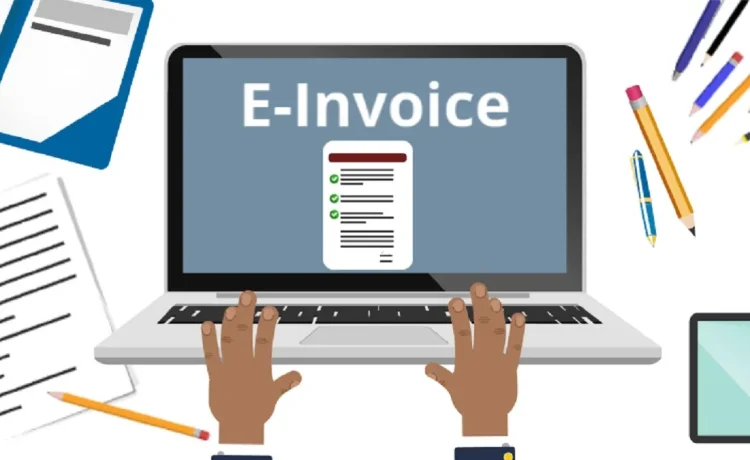E-invoicing is no longer something to think about “later”—it’s becoming the new normal for businesses in Malaysia and many parts of the world. With the LHDN (Inland Revenue Board of Malaysia) setting a timeline for mandatory e-invoicing adoption, now’s the time to get ahead of the curve. One of the best ways to do that? Use accounting software that’s fully equipped to support e-invoice compliance.
If you’re currently using accounting software that feels clunky, outdated, or just doesn’t seem ready for what’s coming, you’re not alone. Many SMEs are now looking for better tools that can help them adapt without overhauling their entire financial process.
What should you be looking for in an accounting solution in Malaysia to make sure you’re covered for e-invoicing?
1. Built-In E-Invoicing Features
Let’s start with the basics. If your software can’t issue e-invoices, it’s going to be a problem. Look for a solution that’s already integrated with LHDN’s e-invoice system or is in the process of getting certified.
Software like Million software and AutoCount are making strides in this area, with direct integration features that allow businesses to send and receive e-invoices seamlessly.
Bonus points if the software supports real-time validation or direct submission to the LHDN platform. This reduces manual errors and ensures your invoices won’t get rejected due to formatting issues or missing details.
2. Customisable Invoice Templates That Match Requirements
E-invoicing isn’t just about going digital—it’s about standardisation. Your accounting software should let you create invoice formats that comply with LHDN’s layout, mandatory fields, and data structure.
It’s great if your platform gives you freedom to brand your invoices, but the core info—like invoice type, tax details, buyer and seller information, and invoice reference number—needs to be accurate and in line with the compliance framework. So check if your software already includes these capabilities or allows for quick updates as regulations evolve.
3. Real-Time Tax Calculations and SST/GST Support
A common pain point for businesses is calculating the correct taxes in real-time, especially if you’re dealing with different product categories or services. With e-invoicing, any tax errors will be much more visible—and possibly even flagged during submission.
Look for software that can auto-calculate SST (or GST if it returns) based on the product or service type. This can save you hours of manual work, help you stay compliant, and give your finance team peace of mind.
4. Cloud-Based for Remote Access and Updates
Here’s a simple truth: Cloud-based software is easier to keep up to date. If your accounting system is hosted locally and you have to call IT every time you need to update it, you’re already behind.
Cloud-based accounting solutions are more agile. Vendors can push updates quickly as compliance rules change, and you don’t have to worry about downloading patches or restarting systems. Plus, cloud access means your team can work on invoicing from anywhere—very useful if your team is hybrid or fully remote.
5. Integration With Other Business Systems
E-invoicing doesn’t operate in a bubble. It needs to work well with your sales, inventory, and customer relationship tools. Ideally, your accounting software should connect with your POS system, ERP tools, and even CRM software to ensure all transaction data flows in the right direction.
For example, let’s say your sales team closes a deal and creates an invoice. That invoice should automatically be synced with your accounting system, and from there, easily submitted as an e-invoice to LHDN. No copy-pasting, no double-entry. Just smooth, connected processes.
6. Audit Trail and E-Invoice Status Tracking
E-invoicing makes financial data more visible—not just to your team, but also to the tax authorities. That’s why having a strong audit trail is key. Your accounting software should allow you to track the entire lifecycle of an invoice: from creation to submission, validation, approval, or rejection.
This feature helps your finance team stay on top of things and also comes in handy if there’s ever a compliance check or audit.
7. Good Customer Support (This Matters More Than You Think)
Even the most well-built software can come with a learning curve. When you’re trying to figure out new invoicing formats or struggling to connect to LHDN’s platform, it helps to have someone you can talk to.
Choose a provider with responsive support—especially one that offers help tailored to Malaysian businesses and regulations. Some providers even offer training sessions or documentation to help your team learn how to make the most of the software.
Final Thoughts: Don’t Wait Until the Deadline
If you’re still using Excel or outdated accounting software that can’t support e-invoicing, now is a good time to make the switch. The transition doesn’t have to be overwhelming if you choose the right tool from the start. Look for accounting solutions that are e-invoice-ready, integrate easily with your current systems, and help you stay compliant as Malaysia’s regulations evolve.
E-invoicing is here to stay, and investing in the right software is one of the smartest ways to keep your business future-ready.







